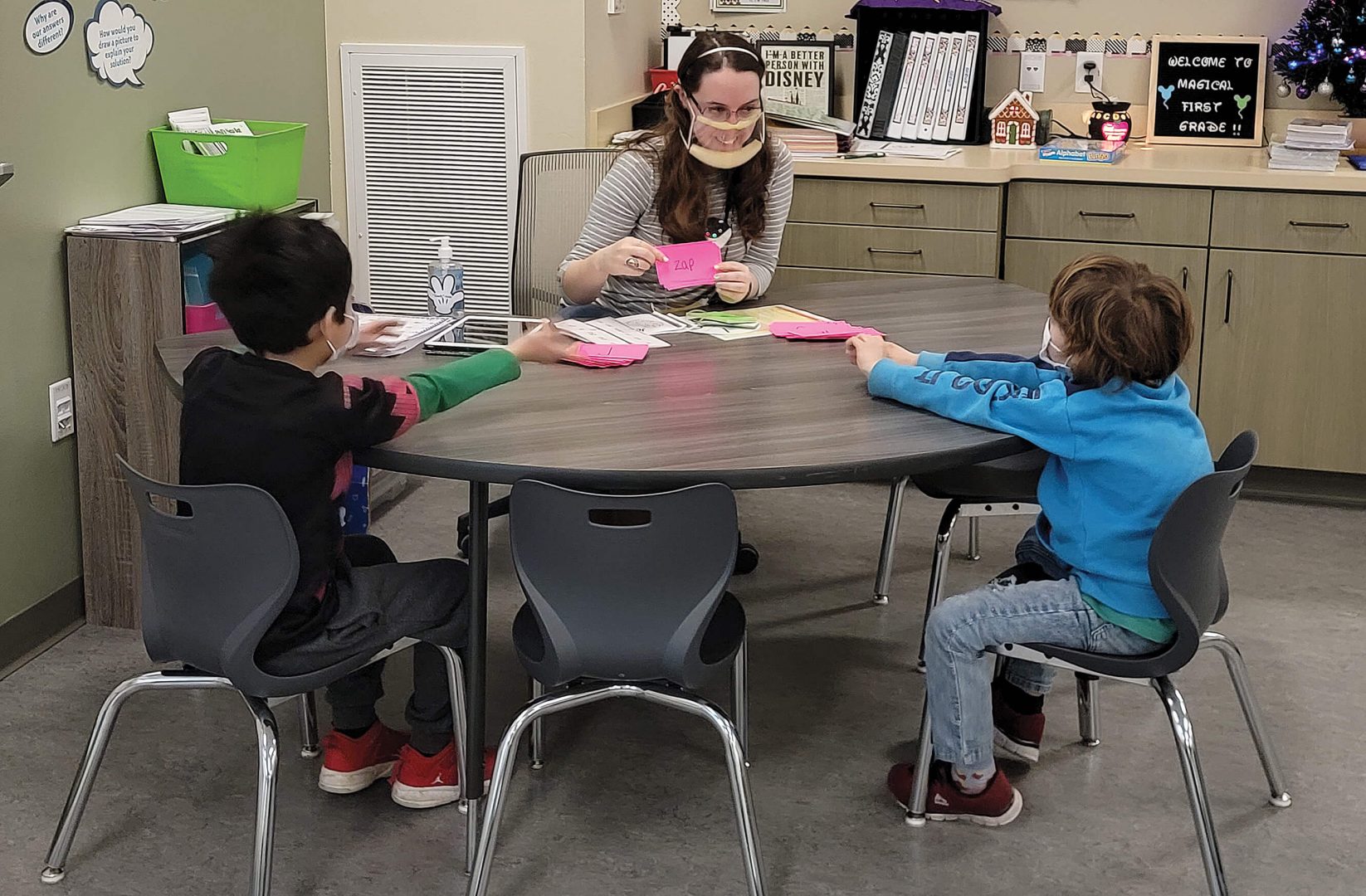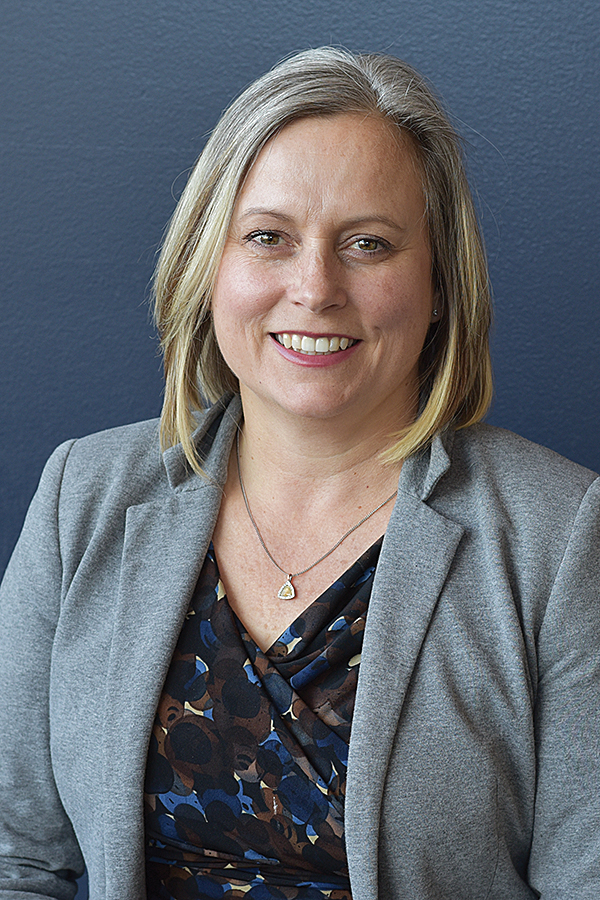Raising better readers: Modern methods promise improved literacy

program at EOU brings these cutting-edge ideas to rural schools.
By the end of third grade, about half of Oregon students have fallen behind in reading comprehension. Difficulty reading at this early stage often leads to lower achievement in school, as well as in adult life.
A new program developed by Eastern Oregon University’s College of Education aims to equip teachers with tools and strategies to ensure more kids stay on track.
Education Professor Ronda Fritz founded the EOU Reading Clinic because her undergraduates needed opportunities to practice the structured literacy methods taught in her classes. She discovered that some in-service teachers hadn’t incorporated these researched-based practices into their classroom curriculum.
“If we could train teachers, then our students would be able to practice in their classrooms. It’s a dual model so pre-service teachers and in-service teachers receive training at different times of the year,” Fritz said.

She partnered with the Oregon Trail Regional Education Network (REN) to incorporate the EOU Reading Clinic into teacher training schedules. The network, which covers Morrow, Union, Baker, Umatilla counties, also agreed to provide a $2,000 stipend to teachers who attend the clinic. Online instruction allows Fritz to reach rural Oregon’s far-flung teachers, many of whom cope with even lower levels of reading proficiency in their schools.
“There’s this inequity in reading instruction that leaves chunks of students unable to read,” Fritz said. “In the U.S. 60% of kids are not at grade level by the end of third grade, and 50% in OR—but it jumps to 70 or 80% when you just look at children of color.”
Addressing this systemic problem earned Fritz and the EOU Reading Clinic an $80,000 grant from the Meyer Memorial Trust over the next two years. Fritz’s peers in higher education are also taking notice.
EOU, originally a teachers’ college, has a long history of graduating top-notch teachers, and the College of Education is already working to incorporate Fritz’s findings into its wider curriculum for undergraduate and graduate students.
“It became a larger conversation about how we’re training teachers at EOU,” Fritz said. “We need to shift to include scientific evidence about how children learn to read and the best methods for teaching literacy.”
Fritz explained that structured literacy intervention involves explicitly teaching children the code of language, rather than passively exposing students to literature and hoping they pick it up on their own.
“In the last couple of decades evidence has started to converge from neuroscience, cognitive science, and psychology all coming to the same conclusions,” she said. “Modern brain research is confirming what educators had found effective for a while. We’re finding that brain structure and transformation requires explicit teaching of that code, not leaving it to chance.”
Teacher prep programs had taught that reading was as natural as speaking, but Fritz said modern data doesn’t support that approach. She pointed to a growing pile of evidence that universities should adjust the methods pre-service teachers learn for teaching reading.
“It’s a call to action for higher education to acknowledge that, and EOU is answering the call and leading the way in the state of Oregon,” Fritz said.
Structured literacy intervention has already shown positive results in states like Mississippi, where literacy rates shot from the bottom to among the best in the country after just six years.
“It’s a call to action for higher education to acknowledge,
and EOU is answering the call and leading the way in the state of Oregon.”
– Ronda Fritz, Associate Professor of Education
“Other states have made incredible gains by ensuring teachers are trained in the science of reading,” Fritz said. “Science tells us that using the right instruction, 95% of students should be at grade level by the end of third grade.”
That increase has a lasting impact because third grade reading scores can predict high school dropout rates, college attendance and even incarceration. Fritz said those foundational years ensure students can access curriculum later on because they’ve mastered reading.
“Teachers are hungry for these methods to make a difference for kids that are struggling in their classrooms,” Fritz said.
Four teachers in the Oregon Trail REN are enrolled in the 10-week Reading Clinic this term. Fritz said 11 more are already signed up for spring and eight for summer sessions. Six local teachers completed the course last summer and serve as mentors, receiving a stipend to coach their colleagues and implement new methods in their schools.
The program reaches beyond Eastern Oregon and into the heart of metropolitan school districts, where a new partnership with Portland Public Schools enables in-service teachers to earn college credit for completing a reading intervention course. The course, called Language Essentials for Teachers of Reading and Spelling (LETRS), is used nationwide to improve literacy teaching practices. Nearly 150 in-service teachers have enrolled, bringing additional revenue to EOU while empowering teachers to expand their skills. Schools and districts cover the cost, and teachers can apply the credits toward a reading endorsement from EOU.
“It’s so exciting because the potential to exponentially impact kids in our region is very real,” Fritz said. “Portland Public Schools sought us out because other universities haven’t been willing to engage in the science of reading, but EOU’s small size allows us to be more nimble and adapt to needs as they arise.”
The EOU Reading Clinic accepts donations through the EOU Foundation to support its ongoing work. Include “EOU Reading Clinic” as a memo with your gift.
